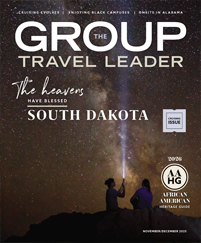Sponsored Content
Louisiana played a pivotal, though often overlooked, role in the Modern Civil Rights Movement of the 1950s and 60s. The Louisiana Civil Rights Trail is a testament to the extraordinary bravery, unwavering resilience, and profound sacrifices made by countless individuals who dared to demand equality and justice. This trail is not just a collection of historical markers; it’s a living tribute where you can discover the real-life heroes who strategized, organized, preached, marched, boycotted, stood up, sat down, and sang for change, ultimately making rights real for all.

As you journey along the trail, you’ll encounter interpretive markers and sites that vividly recount stories across various themes: from thriving Black commercial districts that fostered community and commerce to the challenging and often perilous battles for school and public desegregation. You’ll learn about the clandestine “meeting places” — churches, restaurants, and beauty shops — where activists, including national leaders like Dr. Martin Luther King Jr., gathered to plan crucial strategies. And you’ll witness the intensity of “protests and confrontations,” such as the groundbreaking Baton Rouge Bus Boycott in 1953, which served as a blueprint for subsequent movements like Montgomery’s.

Imagine standing where six-year-old Ruby Bridges bravely integrated William Frantz Elementary School, or where the “McDonogh Three” (Leona Tate, Tessie Prevost and Gail Etienne) similarly desegregated McDonogh 19. Picture the spirited Southern University students staging sit-ins at lunch counters, risking arrest and expulsion for a more just future. Reflect on the historic 105-mile march from Bogalusa to Baton Rouge, a powerful demonstration for voting rights and fair treatment. You can even visit iconic spots like Dooky Chase’s Restaurant in New Orleans, a culinary landmark that also served as a critical safe haven and meeting point for civil rights leaders. The trail also highlights the vital role of places like Friendship CME Church in Lisbon, which courageously opened its doors to activists and saw the formation of groups like the Deacons for Defense.

Each site on the Louisiana Civil Rights Trail offers a unique window into the past, providing context and inspiration that resonates deeply in the present. It’s an immersive experience that brings history to life through archival videos, firsthand oral histories, and compelling narratives.
Don’t just read about history — experience it. Visit LouisianaCivilRightsTrail.com to plan your journey, explore the various sites and delve into the stories that continue to inspire. For an even deeper dive, consider a visit to the Louisiana Civil Rights Museum in New Orleans, an incredible institution that further amplifies these powerful voices.
Come, witness the courage, understand the struggle and feel the spirit of those who fought for a better Louisiana and a better America. The Louisiana Civil Rights Trail awaits your discovery.








